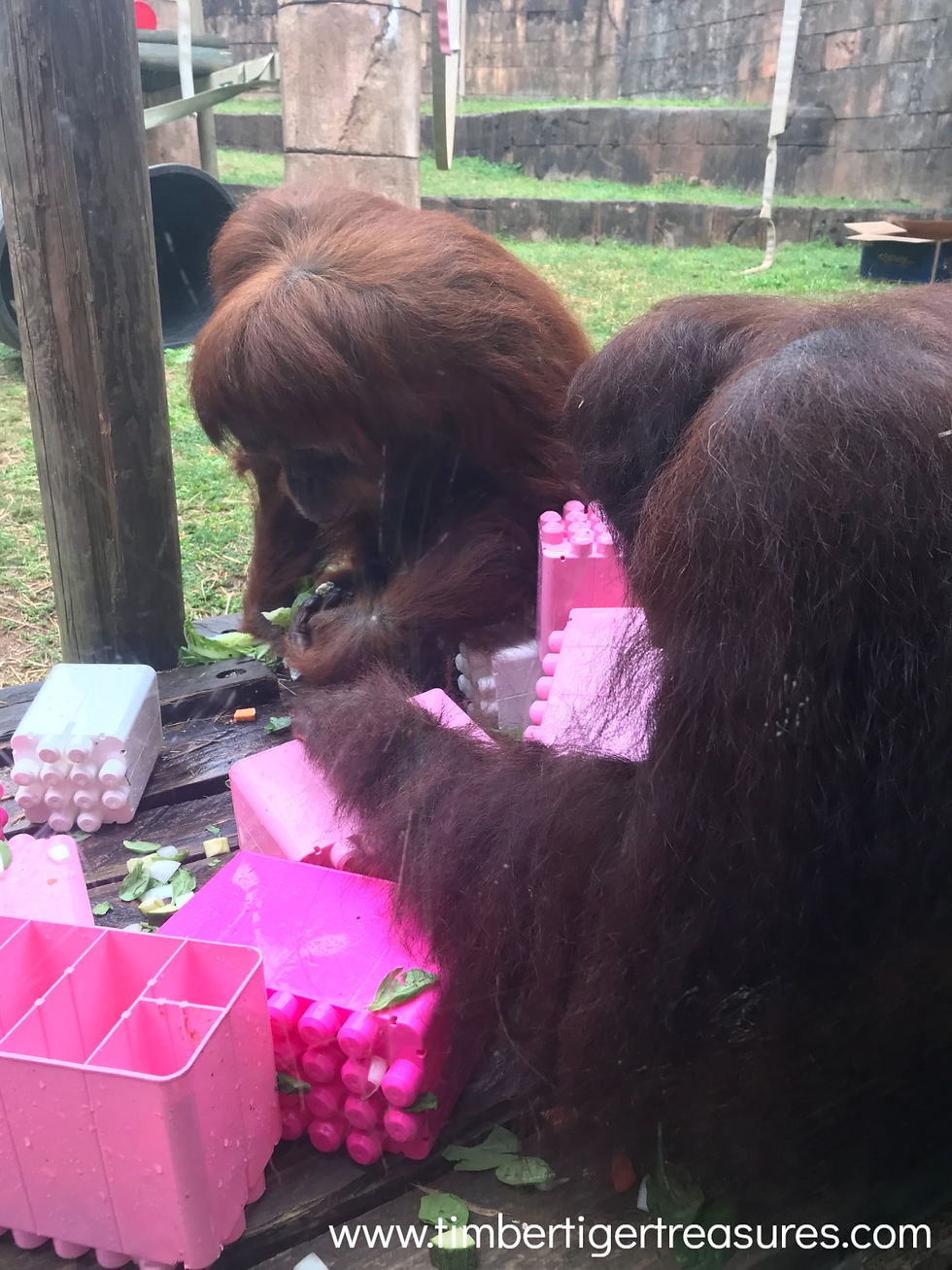Greenville Zoo Visit
- Blythe Bird Bloggers
- Apr 25, 2018
- 4 min read
As previously mentioned in my last blog, I wanted to highlight just a few birds (and a couple other animals) from our visit to the Greenville Zoo in South Carolina earlier this month. After visiting Riverbanks Zoo and Botanical Gardens the day before, we had travelled to Greenville and stayed at a hotel just 7 miles from the Greenville Zoo. The city was pretty easy to navigate (and reminded us of Ocala, FL). The small zoo is located behind and almost within Cleveland Park, a beautiful, forested park by itself to take walks or have a picnic. The entrance was sort of confusing, as we got there just after it opened at 9am and it was drizzling on and off. Here's a photo I took from my phone:

**BONUS: If you attend this zoo with children, make sure to first stop by the South Carolina visitor's center before coming into the state. They had a brochure on the Greenville Zoo and on the back was a coupon for one FREE child's ticket with the purchase of one adult ticket. (That saved us $6.50!) I included a picture of the brochure to the left.

Although it was a bit drizzly, that still didn't keep us from enjoying our visit. What a difference one day, a different location, and an earlier start make! The day before at Riverbanks, one could barely get close enough to even look at each animal. At Greenville, we were three of the only visitor's and practically had the zoo to ourselves.
It was an unexpected treat that the zoo was also having an event called "Enrichment Day." At different times of the day, an expert from the zoo would be going around to show how the zookeepers keep the animals actively engaged in activities that mimic behaviors they would exhibit in the wild. This helps to stimulate their minds and also relieves the boredom of living in such a confined space as a zoo, since all their basic needs have already been met and they have a lot more free time than their wild relatives. This idea of "enrichment" has developed over the past 100 years or so, but has really come a long way since the 1980's as more psychological research on all animals has been conducted.
The first zoos of the 19th century were really nothing more than exhibits that took into account the comforts and needs of the crowds visiting, with little or no thought into what a captive animal really needed. It was a new idea, and many species had never been viewed by the everyday city-dweller. Zoos, zookeepers, and research have come such a long way from this initial set-up. A successful zoo of today takes the animals' physical and psychological welfare into consideration above all else, It was refreshing to learn all about this at the Greenville Zoo. After attending Enrichment Day, I thought about different ways I could provide "enrichment" to our birds at home and am happy to report Cheeko and Cleo gained many more challenging activities with boxes, treats, and things to climb on because of our enrichment day knowledge we gained at the zoo!


I wanted to also share some photos of the amazing animals we saw at the Greenville Zoo. You'll be seeing many of them in some of my upcoming artwork!

White-Faced Whistling Ducks

White-Faced Whistling Duck

Plush-Crested Jay

Black Swan on Nest and White-Faced Whistling Ducks

Ruppell's Griffon Vulture

Ruppell's Griffon Vulture

Greenville Zoo Aviary

Sun Conure

Peacock Pheasant

Amur Leopard


Sumatran Orangutans

My son, Connor, comparing his handprint to that of a Sumatran Orangutan's


The giraffe family trio

Ocelot

Adorable Red Panda
That about wraps up our Greenville Zoo experience. I just wanted to mention one more bird that we were not able to see due to some sad circumstances. Up until at least (Christmas?) of last year, the Greenville Zoo had a pair of Crested Oropendolas. These birds are beautiful neotropical members of the blackbird family found throughout South America. I first saw one on the Panama Fruit Feeder Cam at Canopy Lodge, a live camera on YouTube provided though the Cornell Lab of Ornithology. (Click the link to view the live camera and also learn a bit more about all the different birds from Cornell!)
Alas, there are no Crested Oropendola photos in my blog because one of the birds passed away a couple of months ago, with the other one soon to follow, a mere 4 weeks or so before we visited the zoo. I have no idea what the cause of death was, but Oropendolas can live up to 20 years in captivity. It was very sad news to hear that their two birds had passed. With all the space, cleanliness, and comfort the Greenville Zoo provided all of its animals, I highly doubt the passing of these birds had anything to do with mistreatment or anything like that. I'm definitely not an authority on keeping exotic birds or being a zookeeper/veterinarian, etc., but it seems that maybe some animal species thrive and adapt well in captivity, while some fail.
Really, the captivity of any wild animal is understandably frowned upon, which is why I was happy to see all the different activities zookeepers engage their animals in through psychological enrichment and physical activity. Zoos really are important in the preservation of some endangered species, as well as great places for the general public to really learn about all types of species. Through engaging the public, they help raise awareness about our natural world and how much it needs our help in preserving it and keeping it natural.
~Blythe Bird Bloggers

_edited.png)


























Comments